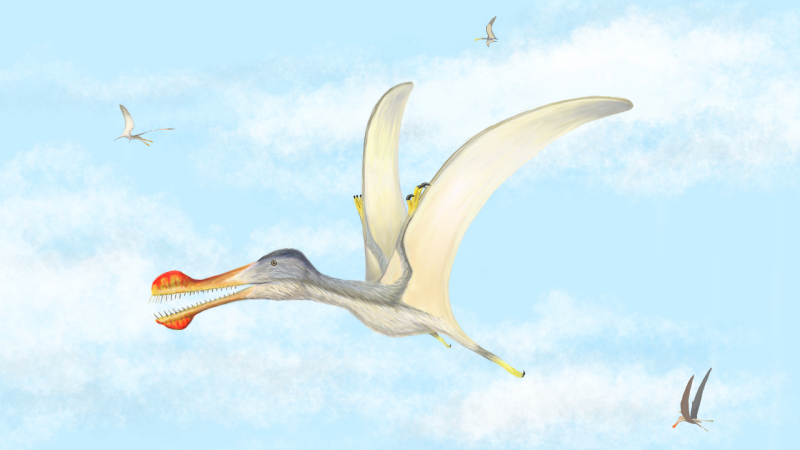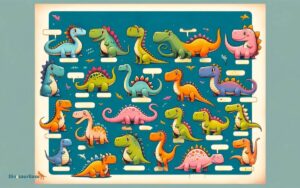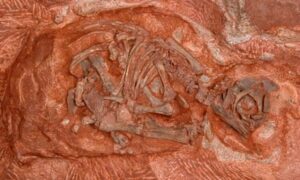Are Dinosaurs Prehistoric? Unearthing Ancient Myths
Yes, dinosaurs are prehistoric, meaning they existed before recorded history. Their era ended approximately 66 million years ago.
Dinosaurs roamed the Earth for about 165 million years, starting in the Triassic period through the Jurassic until the end of the Cretaceous period, showcasing a vast array of species ranging from the small bird-like Microraptor to the colossal Argentinosaurus.
While Hollywood often brings them back to life on the silver screen, our primary knowledge of these astonishing creatures comes from the fossil record. Paleontologists study these ancient remains to unravel the mysteries of dinosaur habitats, behaviors, and their abrupt extinction. The fascination with dinosaurs is not only a part of pop culture but also a significant scientific interest, fuelling ongoing research and discoveries in paleontology, changing our understanding over time.

Myths Vs. Reality: Unraveling Dinosaur Existence
Dinosaurs ignite our imaginations, sparking tales of monstrous beasts roaming the earth. Yet, between storybooks and scientific texts lies a chasm of misconceptions. It’s time to separate fact from fiction, grounding our dinosaur knowledge in scientific truth. Let’s explore the myths and realities of these fascinating prehistoric creatures.
Popular Misconceptions About Dinosaurs
In the realm of dinosaurs, tall tales have distorted our understanding. Myths mislead us about their lives, habits, and ultimate demise. Below, common myths confront the light of reality.
- All dinosaurs were huge. Not true! Sizes varied greatly.
- Dinosaurs and humans coexisted. This is false; millions of years separate them.
- Dinosaurs were all scaly and drab. Evidence now hints at feathers and color.
Scientific Evidence Dispelling Myths
Science equips us with tools to debunk dinosaur myths. Let’s delve into facts unearthed by paleontology.
- Dinosaur Size Variations: Fossils show a range. The Microraptor was bird-sized, while the Argentinosaurus dwarfed many animals we know.
- Fossil Records: Carbon dating proves an evolutionary gap between dinosaurs and humans. No shared era means no cohabitation.
- Feathery Finds: Discoveries like the Sinosauropteryx reveal feather-like structures, suggesting some dinosaurs were more bird-like than previously imagined.
The Prehistoric Timeline: Situating Dinosaurs
The age of dinosaurs sparks wonder in both young and old. These incredible creatures dominated our planet long before humans arrived. To understand their era, we glimpse back at the vast prehistoric timeline. Let’s dig into Earth’s ancient past and pinpoint when dinosaurs roamed the land.
Understanding Earth’s Geological Epochs
Earth’s history stretches over billions of years. Geologists have divided this time into manageable chunks known as geological epochs. These epochs help us understand the planet’s evolving face. They bring order to the complex web of life’s history.
- Precambrian Time: Earth’s beginnings, marked by single-celled life.
- Palaeozoic Era: The rise of fish, insects, and amphibians.
- Mesozoic Era: The reign of dinosaurs and first birds.
- Cenozoic Era: The spread of mammals and flowering plants.
When Did Dinosaurs Actually Roam?
Imagine vast landscapes filled with dinosaurs. This was reality during the Mesozoic Era, known as the Age of Reptiles. The Mesozoic is divided into three periods:
| Period | Years Ago |
|---|---|
| Triassic | 250 to 201 million |
| Jurassic | 201 to 145 million |
| Cretaceous | 145 to 66 million |
Dinosaurs began their rule in the late Triassic Period. They thrived until an asteroid ended their reign at the close of the Cretaceous Period. Their legacy lives on through fossils that continue to educate and amaze us.
Fossil Records Tell A Story
Fossils are clues to the marvels of prehistoric life. They unveil tales millions of years old. Dinosaurs roamed Earth long ago. Their remains, embedded in rock, give us a peek into a lost world.
Exploring The Significance Of Fossils
Fossils are not just stones. They are history books in physical form. Fossils show us how creatures like dinosaurs lived. They reveal what the Earth looked like in ancient times.
- Tracks: Show movement and behavior
- Bones: Tell about diet and size
- Plants: Offer clues on the climate
Fossils help scientists put together pieces of the puzzle that is our planet’s distant past. They show changes over time. Discoveries bring new facts to light, changing what we know.
Breakthroughs In Paleontology
Advances in technology have transformed paleontology. New tools help us find and study fossils in ways not possible before. Digging sites are like time capsules.
- 3D imaging: Lets us see inside fossils
- CT scans: Reveal hidden details
- Dating techniques: Provide precise age estimates
Scientists can now answer questions about dinosaurs that puzzled them for decades. They can tell what colors some dinosaurs were. They understand more about how dinosaurs lived and died.

Credit: www.independent.co.uk
Cultural Impact Of Dinosaurs
Dinosaurs: massive creatures that once ruled the Earth. Fossils bring their history to life. These majestic beasts stir deep wonder in people of all ages. They spark our imagination. Movies, books, and art celebrate them. Our culture loves dinosaurs. Here we explore how they continue to captivate us.
Dinosaurs In Literature And Film
Literature and film give dinosaurs new life. Stories about these beasts are popular. They often feature adventure and mystery. Big names like ‘Jurassic Park’ dominate the box office. These tales blend facts with fiction. They keep us on the edge of our seats. The table below lists some top dinosaur books and movies.
| Title | Type | Year |
|---|---|---|
| Jurassic Park | Movie/Book | 1993/1990 |
| The Land Before Time | Movie | 1988 |
| Dinosaur | Movie | 2000 |
How Dinosaurs Captured The Human Imagination
Why do dinosaurs fascinate us? They are giant, mysterious, and extinct. Kids dream about seeing a real T-Rex. They play with dinosaur toys. Dinosaurs make learning fun. Science becomes an adventure. People want to learn more. Museums are full of dinosaur lovers. These ancient animals teach us about Earth’s past.
- Dinosaurs introduce us to paleontology.
- They show us how life on Earth can change.
- Exhibits, books, and toys make dinosaurs accessible to everyone.
Modern Science Continues To Evolve
Modern science never stops moving forward, especially when it involves our prehistoric past. Dinosaurs, those magnificent creatures that once dominated our planet, continue to fascinate and puzzle the scientific community. As technology advances, so does our understanding of these ancient beasts. Each day could reveal a new piece of the puzzle, transforming our perceptions and deepening our knowledge of the time when dinosaurs ruled the Earth.
Recent Discoveries And Studies
The field of paleontology is buzzing with new findings:
- New species of dinosaurs are being discovered.
- Advances in dating techniques are providing more accurate timelines.
- CT scans allow us to look inside fossils without destroying them.
For example, the recent uncovering of a fossil with preserved feathers has given us direct insight into the evolution of birds from theropod dinosaurs.
The Changing Face Of Prehistoric Knowledge
As we discover more, our textbooks on prehistory are rewritten:
- Behavioral theories about dinosaurs evolve with new evidence.
- The understanding of dinosaur ecosystems grows more complex.
- Views on dinosaur biology and physiology are shifting.
Interactive digital models and comprehensive computer simulations are now common tools for scientists, helping them visualize and test theories about dinosaur life in ways never before possible.

Credit: www.smithsonianmag.com
Dinosaurs: The Eternal Enigma
The mere mention of dinosaurs stirs a sense of wonder in young and old alike. These gigantic creatures that once roamed the Earth are shrouded in mystery, stirring our imagination and challenging our understanding of the past. The passage of time has done little to diminish the allure of these prehistoric giants; instead, their enigma continues to grow, prompting questions that spur scientific inquiry and public intrigue alike.
Perpetual Public Fascination
Why do dinosaurs captivate us so much?- Imposing size: Their vast scale dwarfs modern animals.
- Fossil fascination: Bones tell stories from millions of years ago.
- Cinematic charm: Films bring them to life and into our hearts.
Dinosaurs hold a special place in pop culture and science, maintaining a grip on our collective curiosity. Publications, museums, and media explore their lives, ensuring they remain ever-present in public consciousness.
Unanswered Questions And The Frontier Of Research
Dinosaur research is an evolving field with new discoveries often challenging old theories. Scientific advances allow unprecedented looks into their behavior, biology, and extinction. Studies range from their colorful appearance to their complex social structures.
Key frontiers in dinosaur research include:
- Understanding dinosaur DNA and genetics.
- Deciphering how they communicated and socialized.
- Unveiling the cause of their mass extinction.
Researchers use modern technology like CT scans and 3D modeling to unlock these ancient secrets. New fossil sites offer fresh data, giving scientists pieces to a puzzle that is far from complete. The quest for knowledge continues as each discovery sparks a new set of questions, securing dinosaurs’ place as titans of mystery.
:focal(960x539:961x540)/https://tf-cmsv2-smithsonianmag-media.s3.amazonaws.com/filer_public/00/43/0043b054-b232-4bef-b2ce-44bf9dd67e6d/image_10580_1e-dearc-sgiathanach.jpeg)
Credit: www.smithsonianmag.com
Frequently Asked Questions On Are Dinosaurs Prehistoric
Are Dinosaurs Considered Prehistoric?
Yes, dinosaurs are considered prehistoric as they existed millions of years before recorded history. They lived during the Mesozoic Era, which predates modern human existence.
Are Dinosaurs Older Than Cavemen?
Yes, dinosaurs are older than cavemen. Dinosaurs roamed the Earth millions of years before the first cavemen appeared.
Who Existed Before Dinosaurs?
Before dinosaurs, various primordial reptiles and amphibians roamed the Earth, specifically during the Carboniferous and Permian periods. These ancient creatures included Dimetrodon and Edaphosaurus, among others.
What Does The Bible Say About Dinosaurs?
The Bible does not explicitly mention dinosaurs. Its ancient texts predate modern scientific discovery of these creatures by millennia.
Conclusion
Diving into the mysteries of prehistoric times reminds us how dynamic Earth’s history truly is. Dinosaurs once dominated our planet, leaving a legacy that excites both scientists and enthusiasts. Our journey through their ancient world reaffirms their prehistoric existence and enduring fascination.
Embrace your curiosity and continue exploring these magnificent creatures to uncover more hidden truths.





